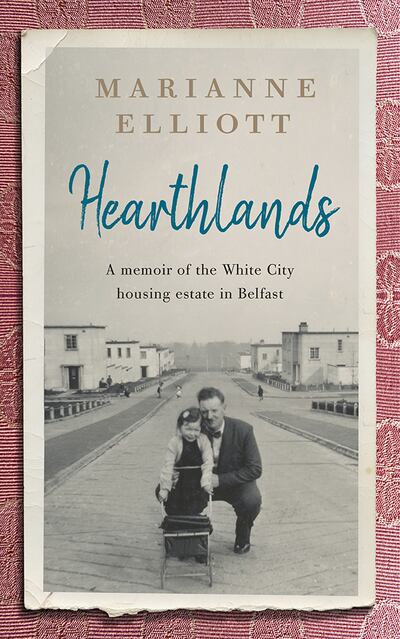
I have never subscribed to the view that the Northern Ireland Troubles of 1969-98 were inevitable. This was reinforced when I served on the 1993 Opsahl peace commission and met a group of North Belfast women. Like myself they had grown up in mixed-religion housing, only to find their communities torn apart by the Troubles and re-sorted into single-religion ghettoes. These women had kept in touch with friends from the old community and worried that those memories would be lost, for their children had had no such experience. Since then I have felt that this was a story that needed to be told.
I knew that the body most credited with building such neighbourhoods was the Northern Ireland Housing Trust, established in 1945 to remedy the housing crisis caused by neglect and wartime bombings. At first I had intended to tell the story of its work throughout Northern Ireland. However, this would have been a very large project, taking many years, and time was passing. There might not be many of the original residents left to tell their stories. This is why I decided to focus on Belfast – where the housing crisis was worst – and in particular on the North Belfast Housing Trust estate where I grew up, the White City. Hearthlands is a people-place biography of that estate and of the times through which the people lived.
It was into this, one of the trust’s first-built mixed-religion estates, that my parents moved in 1949. The first residents were young and had lived through the hardships and dangers of the second World War. Some had lost their homes in the blitz of Belfast. Many of the men had just been demobbed from wartime service, southerners among them. Our next-door neighbour was from Dublin, another in the same street from Cork, yet another from Donegal. My own mother was from Kerry. She had met my Belfast father in Dublin. He was coming up for a commission in the Irish army and his photo in dress uniform was proudly displayed in my childhood home. In the course of the required medical, however, it was discovered that he had contracted tuberculosis and he was sent home to Belfast and to a much bleaker career future.
In 1949 my parents were living in a dilapidated country cottage, with no running water or inside toilet when the housing trust manager came to discuss their housing application. Other original tenants told similar stories. Anna recounted travelling by a succession of buses to Belfast from Donegal when her husband’s application was successful. In 1947 they were one of the first tenants to move in. Travelling alone, with numerous suitcases and three small children, it was quite a feat. Shane’s, Anne’s and Gerry’s people had been bombed out in the 1941 blitz of Belfast. “We had had a terrible war,” Flo Kelsey told me as she assured me that the non-sectarian neighbourliness that I recalled was not imaginary.
Hearthlands is also a social history of Belfast in the decades before the Troubles, taking in popular pastimes, work, schooling, shopping, fashion, the arrival of the motor car and television and above all the impact of the welfare state on working-class lives, from its introduction in the late 1940s. It also covers the not-so-ordinary, the big events like the 1952 “society” murder of Patricia Curran, close to the White City; the Princess Victoria shipping disaster of 1953 with the loss of all but 44 of the 177 on board; and most of all the stolen babies scandal of 1954-5, which involved the police forces of the whole island and was centred on the apparently respectable and hard-working McGeehan family on the estate.
Their little girl, four-year-old Bernadette, was discovered to have been taken as a baby from her pram in Henry Street, Dublin, in 1950 and her “mother” Barbara returned to the same street in December 1954 to take a baby boy in almost identical circumstances. The father Ernest seems to have been entirely innocent and to have accepted the babies as his own. Newspaper reports dwell upon his despair, surrounded by Christmas presents as the children were taken away and his wife arrested. Whilst those who spoke with me recognised the tragedy for the original parents and particularly for the little girl, none were critical of Barbara and both she and her husband lived out their days on the estate until the 1970s. They were “a lovely family”, former neighbours told me. “Mrs McGeehan was a lady … She was clean. She had the house spotless”, and Ernest “was a wee gentleman … an innocent cratur … if she hadn’t gone back to Dublin for that second baby no one would have known”.
My book is also something of an alternative history of the institutions of Northern Ireland. It does not deny the iniquities that arose from one-party Unionist rule, but it shows that the high-octane rhetoric that made its way into the press was not reflective of most people’s lived experiences and that democratic values operated more often than commentators recognise. The establishment of the Housing Trust in 1945 – a special housing body, quite separate from the local councils – is a case in point. It was defended by the unionist government even against country unionists’ protests about trust houses going to Catholics. It is recalled with some nostalgia by the older tenants of the White City and it was unfairly caught up in the recriminations about housing allocations in the lead up to the Troubles, though it had been disliked by the more discriminatory local councils.
Hearthlands: A Memoir of the White City Housing Estate in Belfast by Marianne Elliott is published by Blackstaff Press, at £12.99. David Park reviews it for The Irish Times next month





















